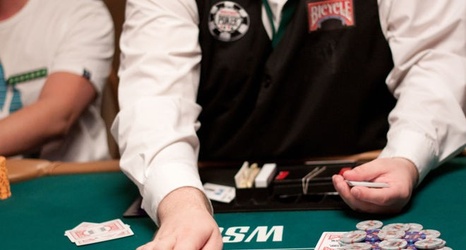Many people share a misunderstanding about poker probability calculations — but it's one that almost never gets explicitly addressed. I aim to change that.
We start with a common probability statement. To take perhaps the most often-used one, you flop a flush draw — let's say it's in spades — and want to know the probability of making your hand with two cards to come.
You know where four of the spades are: two in your hand and two on the flop. That leaves nine in locations unknown. You can see a total of five cards, leaving 47 unseen.
